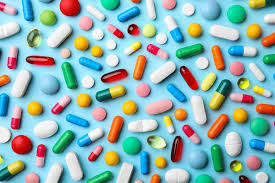
Scientists Develop Efficient Photocatalyst to Combat Antibiotic Contamination
A team of scientists from the Institute of Advanced Study in Science and Technology (IASST), Guwahati, has developed a groundbreaking photocatalyst capable of efficiently degrading sulfamethoxazole, a broad-spectrum antibiotic, into less hazardous chemicals.
This development addresses growing concerns over antibiotic contamination, which has significant implications for human health and the environment.
Antibiotic contamination, particularly from commonly used drugs like sulfamethoxazole (SMX), poses serious risks, including the rise of antibiotic resistance, ecological damage, and threats to human health. More than 54% of SMX, which is widely used to treat urinary and respiratory infections, is excreted into the environment through urine and feces, contributing to this problem.
To tackle this issue, the IASST team, led by Professor Devasish Chowdhury, synthesized copper zinc tin sulfide (Cu2ZnSnS4 or CZTS) nanoparticles and a composite made from CZTS and tungsten disulfide (WS2). These materials were created through a hydrothermal reaction involving zinc chloride, copper chloride, tin chloride, and tungsten disulfide, resulting in a highly efficient photocatalyst capable of breaking down SMX into safer compounds.
"CZTS and its nanocomposites are multifunctional quaternary semiconductor materials made from earth-abundant, non-toxic, and inexpensive components," explained Prof. Chowdhury. "Their remarkable photostability makes them valuable for light-harvesting and photocatalyst applications."
The team, which includes Nur Jalal Mondal, Rahul Sonkar, Mridusmita Barman, and Dr. Mritunjoy Prasad Ghosh, demonstrated that the CZTS-WS2 composite exhibits strong photocatalytic activity in breaking down SMX. Importantly, the catalyst can be recovered and reused without losing its effectiveness, offering an economically viable solution for large-scale applications.
The study, published in the Journal of Photochemistry & Photobiology A, used liquid chromatography-mass spectrometry (LC-MS) to analyze the intermediate and final products of the degradation process. It found that most of the resulting compounds were far less hazardous than the original antibiotic. Additionally, the CZTS-WS2 composite showed over 80% radical scavenging efficiency and antibacterial properties, further highlighting its potential for mitigating antibiotic contamination.
This new photocatalyst offers a promising approach to addressing the environmental and health risks associated with antibiotic pollution, providing an innovative solution for reducing contamination and promoting a cleaner, safer environment.